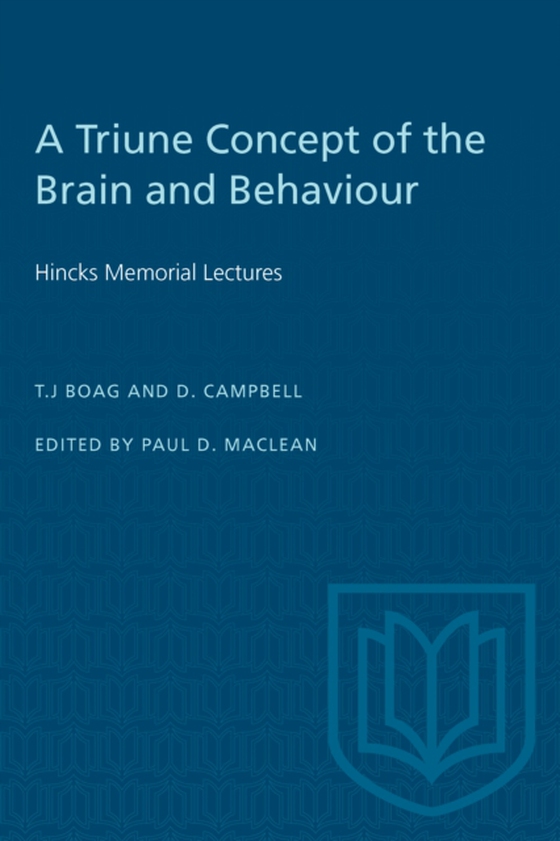
Triune Concept of the Brain and Behaviour e-bog
209,76 DKK
(inkl. moms 262,20 DKK)
This book reveals emerging theory in the nebulous area between neurophysiology and behavioural science which is of such vital importance in the mental health field. Part I of the book contains the three Hincks Memorial Lectures given by Dr. MacLean: 'Man's Reptilian and Limbic Inheritance,' 'Man's Limbic Brain and the Psychoses,' and 'New Trends in Man's Evolution.' Dr. MacLean emphasizes that ...
E-bog
209,76 DKK
Forlag
University of Toronto Press
Udgivet
15 december 1973
Længde
178 sider
Genrer
Psychology
Sprog
English
Format
pdf
Beskyttelse
LCP
ISBN
9781487576752
This book reveals emerging theory in the nebulous area between neurophysiology and behavioural science which is of such vital importance in the mental health field. Part I of the book contains the three Hincks Memorial Lectures given by Dr. MacLean: 'Man's Reptilian and Limbic Inheritance,' 'Man's Limbic Brain and the Psychoses,' and 'New Trends in Man's Evolution.' Dr. MacLean emphasizes that the primate forebrain has evolved and expanded along lines of three basic patterns characterized as reptilian, paleo-mammalian, and neo-mammalian. Radically different in structure and chemistry, the three evolutionary formations comprise, so to speak, a triune brain. Dr. MacLean focuses on the intermediary role of the paleo-mammalian brain (limbic system), describing clinical and experimental observations that are relevant to understanding brain mechanisms involved in emotional and sexual behaviour, personal identity, memory, dreaming, and certain psychoses. Part II contains four chapters on sleep and dreaming, and four on the psychology of memory, by workers in these branches of the mental health field. They report research on the organic amnesias; recent developments in memory consolidation theory; input dysfunction in schizophrenia; similarities in the side-effects of ECT and temporal lobectomy in man; confusional sleep disorders; sleep disorders and delirium associated with the use of alcohol; the function of rapid eye movement sleep and of dreaming in the adult; and patterns of sleep in the newborn child.
 Dansk
Dansk

